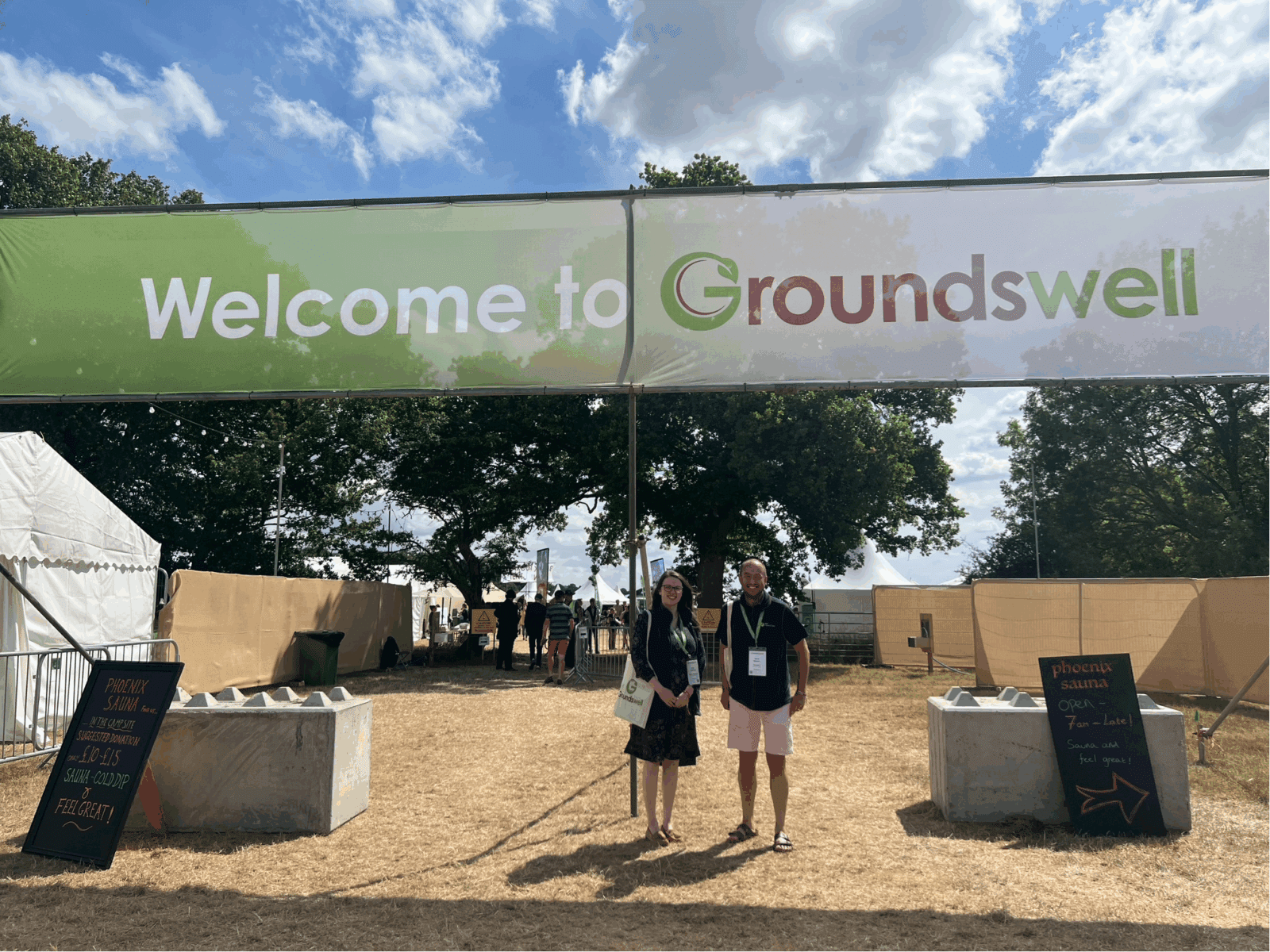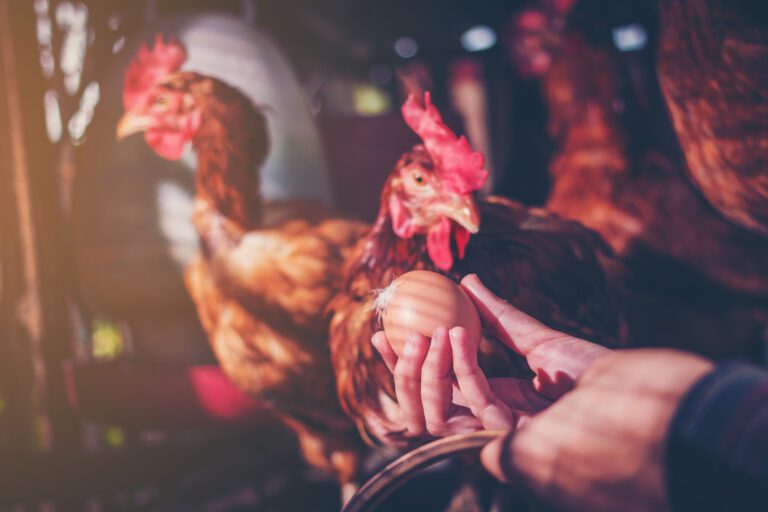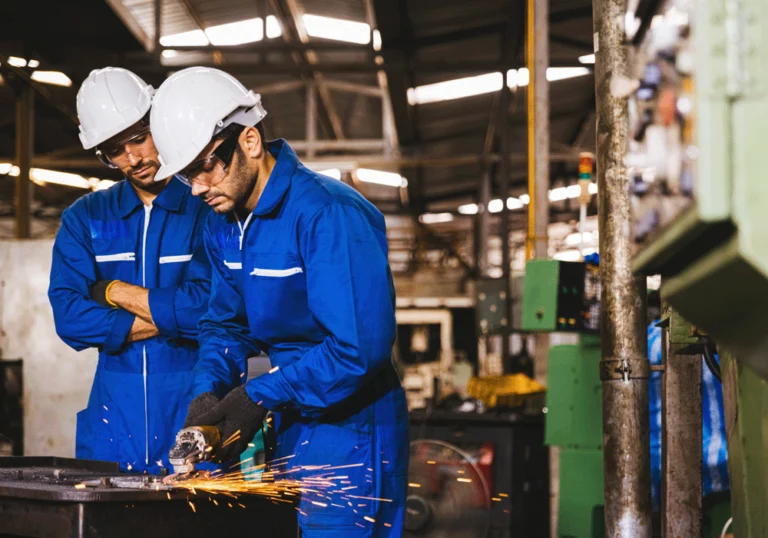
From soil to sustainability
Exploring regenerative dairy farming

Introduction
Earlier this month, Kelly Wakeham and I visited Groundswell, billed as ‘the regenerative agriculture festival’, which is held at Lannock Manor Farm near Hitchin in Hertfordshire. The purpose of the journey was to learn more about regenerative farming and why it is becoming increasingly popular.
The principles, mottos and themes of regenerative agriculture
We started off by gaining some knowledge in respect of the principles of regenerative agriculture, as follows:
- Minimising soil disturbance by maintaining the soil’s integrity, improving the water infiltration and not using till agriculture (mechanical manipulation of soil) processes.
- Protecting the soil surface by using over-winter cover crops, avoiding fertiliser usage in wet weather and employing precision agriculture techniques.
- Maintaining living roots in the soil by carbon capture and having a mutually beneficial relationship between fungi and plant roots, whereby fungi assist the root system’s reach into the soil enhancing a plant’s access to nutrients, whilst the plant provides fungi with sugars generated via photosynthesis.
- Plant diversity with a broad rotation of crops, using companion cropping and rotational leys, with the latter becoming increasingly popular.
- Livestock integration, involving high-impact mob grazing, the mimicking of nature and a long recovery period for fields.
These principles are over-arched by the motto of healthy soils leads to healthy plants which leads to healthy animals and ultimately healthy people on loop.
The theme of the principles revolves around food production, with a further two themes of regenerative agriculture being environment and society.
The environment aspect covers maintaining a healthy air, to reduce nitrous oxide emissions, a healthy water system to reduce spells of drought and flooding, a healthy soil, to capture as much carbon as possible and healthy habitats and species above and below the ground to allow nature to benefit all.
For society, regenerative offers many benefits including heritage, education and employment as well as creating access opportunities, feelings of empowerment and resilience and a sense of community.
Reasons for a more regenerative approach and a key message
We learned that whilst it sounds like a sensible idea to adopt at least some regenerative practices, the reasons for doing so are both global and local.
On a global scale, intensive agricultural practices have resulted in a relentless pursuit of increased yields. This has lowered the quality of food, reduced resilience of both crops and livestock, created health problems and led to environmental damage and food waste.
On a local level, root systems have been destroyed, soils have become dry or completely reliant on man-made fertilisers, crop and nature diversity has decreased and fields cracked, flooded or just turned into wasteland.
The key message was to avoid destroying soils there should be a shift away from ‘yield per hectare’ to ‘health per hectare’.
Regenerative dairy farming
We acknowledged that the idea of using regenerative farming practices in the dairy farming industry is quite divisive. In the broad sense, regenerative dairy farming is considered similar to any form of regenerative farming, using a system-based approach with dairy cows as the drivers of the system to maintain healthy soils, healthy pasture, healthy animals and healthy people.
The message given to us is that regenerative system is circular. It starts with healthy soils and working ecosystems, it leads to healthy animals and people and ultimately creates business resilience.
On a generalised scale, dairy cows graze upon various pastures to support ecosystems above and below the ground and create nutrient rich soils infused with carbon. That soil allows arable crops to be grown without fertilisers to produce food for humans and feed for cows. Those cows produce milk to sell, but also calves which are either fed some of the grown diverse arable crops produced or can graze on nutrient rich grazing pasture. Those calves can ultimately be sold for beef, as can fruits and other foraged crops.
The diversification is therefore not just in the system but also in the end products of milk, beef, fruit, nuts and crops, and greater resilience can be obtained with less external reliance on feed, fertilisers and fuel. Whilst the products sold by the farm, are unlikely to always be local, it does offer the opportunity for a healthy local community as well as creating jobs.
Being slightly more specific, healthy soils and working ecosystems involves a water cycle that can operate efficiently in times of drought and flooding to enable plant growth and absorb carbon. Energy is transferred between plants, insects and the soil and a working ecosystem created to provide natural nutrients without the use of artificial fertilisers and nitrous oxide. There are a variety of ways to achieve this, and we learned that one size does definitely not fit all.
Healthy animals and people revolve using the right animals in the right situation that can feed of leys and rich grass to produce high quality milk. One example we learned about was the use of around 250 Viking Red heifers over 1200 acres in Dorset, because that breed of dairy cow could walk relatively long distances on a regular basis.
Business resilience and circularity is not easy in any circumstances and sometimes there is a need to tweak processes, and occasionally plough rather than direct drill, or buy-in foraged crops to achieve the desired results, as was identified at a 420 acre farm in Pembrokeshire.
Each individual regenerative dairy farmer’s journey is different and it is very specific to their farm, their geography and their soil.
Barriers to regenerative dairy farming
The biggest issue from comments that were made is cost. Dairy farmers benefit from economies of scale and therefore the larger the herd size the easier it is to meet increased demand for high yields and generate profit. However, bigger herds lead to bigger parlours and often, increased debts, to finance equipment and meet regulatory requirements.
There is perhaps a difficulty is communicating the benefits of regenerative farming to both farmers and end consumers. Certain farmers will understandably not want to move away from a yield-based approach that has served generations well over many years whilst consumers are often solely focused on the price of food and milk.
Becoming a regenerative farmer takes time, as it involves the creation of a system, it is not a piece of machinery that can be purchased. Time costs money and often government grants are needed to start the process to effectively compensate for the time spent allowing the system to develop.
The calculation of success is difficult to quantify. Is it focusing on carbon emissions, is it generating the same profit as before or is it the number of new species on the land?
Conclusions
It appears, from our learning, that regenerative dairy farming revolves around adopting a system based approach, where various outcomes are considered. Whilst these can still include profit and yield, as many farmers will still want to, they could also include number of new crops grown, the reduction in bought in feed, the reduction in fertiliser usage, the number of new products sold, soil health and wildlife creation.
Regenerative farming is clearly a topic that interests many with over 10,000 attending Groundswell 2025 including Prince William, this compares to just 500 in its first year nine years ago and my expectation is that the principle and this event will continue to gather momentum in future years.
With milk prices currently healthy, dairy farmers whether adopting regenerative practices or not, are likely to be seeing fairly healthy profits, especially those with larger herds.
Here at PKF Francis Clark, we are always pleased to help people undertake effective and well-trodden tax planning, so please do get in touch if you would like our help.












